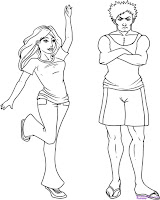In the philosophy of
all Martial Arts ‘body, mind and spirit’ have to be and work united in order to
be successful in any combat situation. In my previous posts you can easily
figure out I claim that the same is valid in exceptional leadership.
Here I’d like to go
deeper into the subject by using the knowledge that has been steadily
compiling. In the post Wing Chun basics 4Leadership I explained this topic through Wing Chun
perception of ‘central line, economy of movement and simultaneous attack and
defense’. The first can be used as a reference for body as on the ‘central
line’ reside most of the vital points of a human. The mind is the most energy
lavishing organ in our body. Therefore, a martial art teaches to store “the
muscle knowledge” of all your hits, kicks etc. in your ‘muscle memory’ (will be
discussed further below) allowing us to be faster and more explosive than we
are within the conscious (mind) way of moving our extremities. In the fight there’s
simply no enough time to deliver hits and protect oneself. Therefore ‘a simultaneous
attack and defense’ is called for. It is “a spiritual way” to be confident that
your whole body and not just your hands will protect you. But, at the same time
a person has to have high spirit to combat with the opponent.
Looking at those two different
options and issues through the same lens give us the opportunity to appreciate
the similarities in them. So I tend to see most of the Asian Martial Arts as
trains heading for the same destination – the unification of body, mind and
spirit - but on different tracks.
Tai Chi’s (Taiji) main
aspect is the yielding: when attacked Tai Chi “turns into water” and yield. The
main emphasis of Tai Chi is working internally utilizing the Qi (see: Qi–energy–leadership). The Great Masters of Karate, Judo, Kendo,
Aikido, Jiu-Jitsu, Sistema etc. all taught and tried to inculcate different
principles to unify the three.











